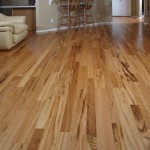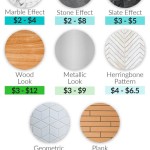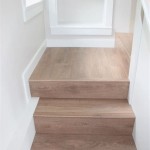Can You Install Lifeproof Flooring Over Concrete Floors in a House?
Lifeproof flooring, a popular choice for homeowners seeking durable and stylish floors, is often considered for installation over concrete subfloors. This practicality stems from the prevalence of concrete floors in many homes, especially those with basements or lower levels. Understanding the feasibility of installing Lifeproof flooring directly over concrete, however, requires careful consideration of several factors. While it is generally possible, there are specific considerations that need to be addressed for a successful and long-lasting installation.
Assessing the Concrete Subfloor
The condition of the concrete subfloor is paramount to a successful Lifeproof flooring installation. Several factors must be assessed before proceeding:
- Levelness: Uneven concrete can lead to uneven flooring and potential damage to the Lifeproof planks. Using a level, measure the floor's flatness. A general rule of thumb is that the deviation should be no more than 1/8 inch per 10 feet. If the floor exceeds this limit, leveling may be necessary to ensure a stable and smooth surface.
- Moisture Content: Concrete floors are often prone to moisture issues. High moisture levels can cause the flooring to warp, buckle, or even mold. Conduct a moisture test using a moisture meter to determine the moisture level of the concrete. The acceptable moisture level varies depending on the specific Lifeproof flooring type, so consult the manufacturer's guidelines for the recommended moisture content.
- Cracks and Gaps: Cracks or gaps in the concrete can compromise the stability and evenness of the flooring. If cracks are present, they should be sealed with a suitable sealant to prevent them from expanding and affecting the Lifeproof flooring. Similarly, gaps between concrete slabs should be filled with a suitable material to create a smooth surface.
Preparing the Concrete Subfloor
Once the concrete subfloor has been assessed, proper preparation is essential for a successful installation. This typically involves:
- Cleaning: The concrete subfloor should be thoroughly cleaned to remove any dirt, debris, or residues that could interfere with the installation. A vacuum cleaner and a damp mop can be used to clean the surface efficiently. Ensure that the surface is completely dry before proceeding to the next step.
- Priming: Applying a concrete primer to the surface can create a more stable base for the Lifeproof flooring. The primer helps seal the concrete pores and improves the adhesion of the adhesive used for the flooring installation. Follow the primer manufacturer's instructions carefully for proper application.
- Leveling: If the concrete floor is not level, it may require leveling before installing the Lifeproof flooring. Leveling compounds are available at hardware stores and can be used to fill in low spots and create a flat surface. Allow the leveling compound to dry completely before proceeding with the installation.
Benefits of Installing Lifeproof Flooring Over Concrete
Installing Lifeproof flooring over concrete offers several advantages for homeowners:
- Durability: Lifeproof flooring is known for its resilience against scratches, dents, and stains. This durability makes it an ideal choice for high-traffic areas, especially when installed over concrete subfloors, which are inherently strong and stable.
- Water Resistance: Concrete floors are naturally resistant to water damage. Installing Lifeproof flooring over concrete provides an extra layer of protection against moisture and water spills, making it a suitable option for kitchens, bathrooms, and basements.
- Sound Insulation: Concrete floors can amplify sound, making them less desirable in rooms where noise reduction is crucial. Installing Lifeproof flooring can help absorb sound and minimize noise transmission, creating a quieter and more comfortable living environment.
- Cost-Effectiveness: Installing Lifeproof flooring over concrete can be a cost-effective option compared to other flooring choices. The concrete subfloor acts as a stable base, reducing the need for extensive preparation or subfloor replacement before installation. This can translate to a cheaper installation cost compared to other flooring options.
In conclusion, installing Lifeproof flooring over concrete floors is a practical and often ideal solution in many homes. By carefully assessing the subfloor condition, preparing the surface, and adhering to the manufacturer's guidelines, homeowners can achieve a long-lasting and visually appealing finished floor. The benefits of durability, water resistance, sound insulation, and cost-effectiveness make Lifeproof flooring a desirable choice for those seeking a durable and stylish flooring option for their concrete surfaces.

Lvp Flooring Installation Over Concrete Subfloor Full Instructional Builds By Maz Flooret

How To Install Vinyl Plank Flooring Lifeproof Over Concrete

Tips For Installing Vinyl Plank Over Concrete Floors Lemon Thistle

Why We Chose Lifeproof Vinyl Flooring And How To Install It

Why We Chose Lifeproof Vinyl Flooring And How To Install It

How To Install Lifeproof Flooring The Home

How To Install Lifeproof Vinyl Flooring

How To Install Lifeproof Flooring The Home

Installing Lifeproof Vinyl Plank Flooring Our Diy Guide Exquisitely Unremarkable

Why We Chose Lifeproof Vinyl Flooring And How To Install It
See Also







